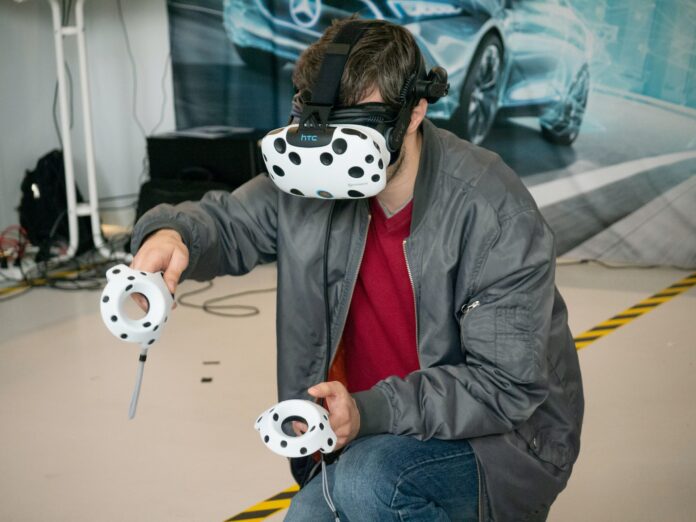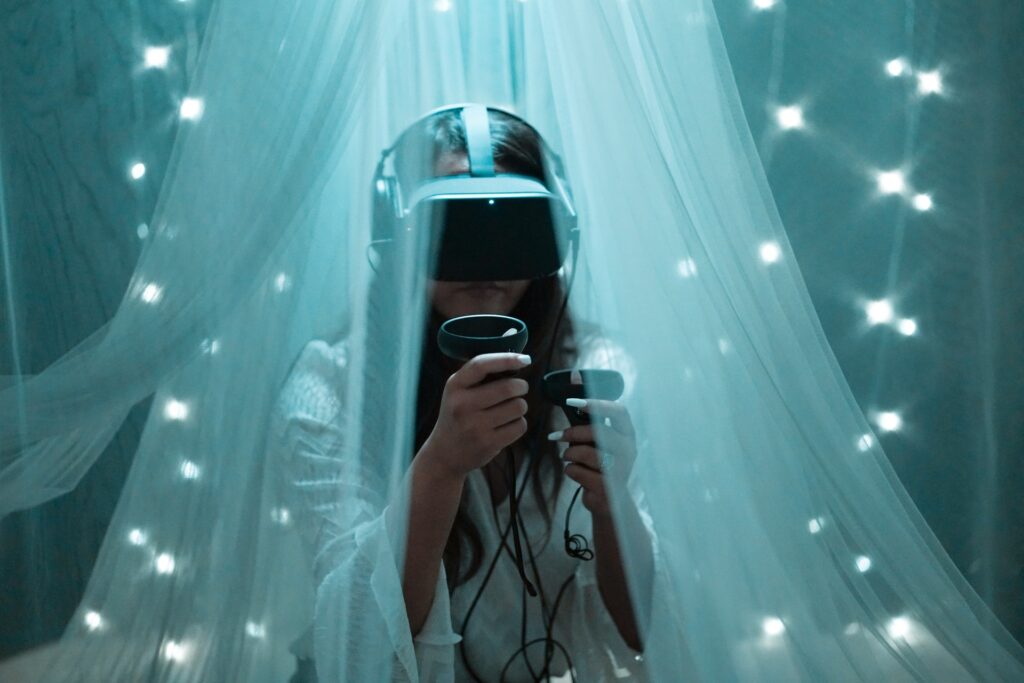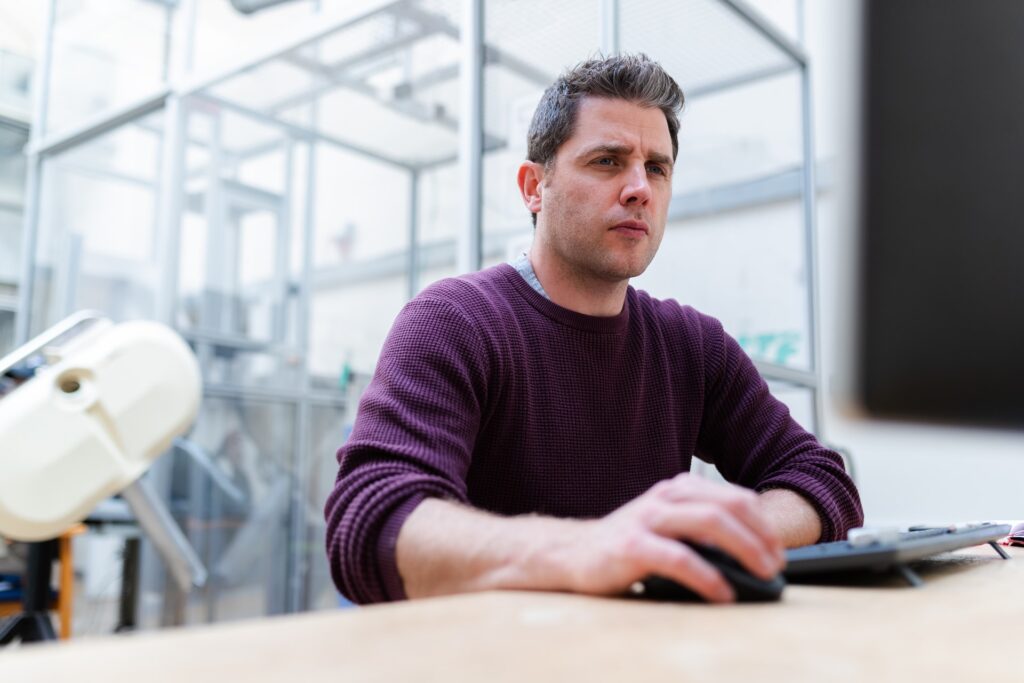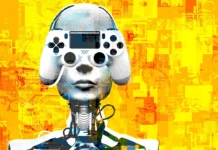
Virtual Reality has always been a fascinating concept with hundreds of useful applications besides recreational use. People who have experienced it often claim it is very convincing. As with any technology, there is always room for improvement. The latest in this industry is the development of Tactile Virtual Reality; more on that later. Here is a deeper analysis of Virtual Reality, its common and industrial applications, as well as the latest developments.
A Brief History

Before VR was developed into the headset we are familiar with now, a larger contraption was invented in 1957 that can be considered the first virtual reality experience. ‘Sensorama’ allowed users to have all five of their senses awakened by different methods. The term was not coined until two decades later.
In the 1960s, while people were more fascinated with space exploration, a flight simulator was developed by the military. The practical applications of virtual reality became more clear, as scientists realized they could use the technology to train pilots and possibly develop it further for aerospace training. NASA continued to develop virtual reality for training its pilots over the next decades. Today, flight simulators and space flight simulators are commonplace in their respective industries.
The general public began to use VR more prominently since the 1990s, as better computer graphics allowed for games to be further developed. Starting with arcade games, and moving onto PC-connected games, and special gaming VR glasses, the world of gaming never stopped expanding into virtual reality. Many users on the social gaming website Twitch use VR games. Some are even able to earn a decent income through the app, using services such as SubscriberZ to grow their broadcasting pages. Movies embracing virtual reality as a theme were released, allowing for the technology to be more mainstream.
Applications of Virtual Reality
Military

As previously mentioned, the military industry has many uses for virtual reality. There are numerous ways in which simulators can be used to train military personnel, without the risk of injury. This is also a very cost-effective method, as there are no logistical expenses involved, or the need to purchase firearms and other equipment. Especially important, is the use of VR to train military pilots. Flight simulators have advanced greatly over the past decades, giving the pilots a very life-like, realistic experience.
Surgical Training
Students of surgical medicine all over the world are using virtual reality to train their surgical skills. This is especially important as it is a way to practice surgical skills with no risk to human life. Even inexperienced first-year students are able to use virtual reality without any consequences.
Psychotherapy

Several practicing psychotherapists have used virtual reality as a means to treat mental health disorders. As virtual reality develops to be more life-like, it is easier for the patient to believe they are in a real-life situation. The psychotherapist has control of the patient’s environment and thus has the ability to create events that potentially lead to treatment. A very well-studied use of this treatment plan is the treatment of phantom limb syndrome.
Automotive Industry
Every vehicle that is approved for driving on main roads, must first be rigorously tested. The automotive industry spends billions yearly on making sure their vehicles are road safe, so any methods to safely cut costs are welcome. Using virtual reality, they are able to simulate testing vehicles at the first stages of design, without the need to fully manufacture a prototype. In this way, they are able to work out any problems that arise at the first stages, while also decreasing their costs, as well as environmental impact.
Tactile Virtual Reality
The latest development of this futuristic technology, enables users to perceive things by touch while in the Virtual Reality simulation. Scientists and engineers all over the world have been attempting to achieve this for years. Adding touch to what seems to be an entirely visual and auditory environment, greatly improves the realistic element of virtual reality. For example, a user with VR goggles can see a bird in the virtual environment, and hear it chirping. However, with the headset alone, they cannot feel the warmth of the bird or the difference between the feathers and the beak.
Thus engineers developed tactile virtual reality gloves to create a more realistic VR environment. The gloves would contain an actuator, which is the part of the device that gives movement, or in this case, vibrations. Small vibrations can simulate the feeling of touching a moving bird. However, in the past, gloves and other devices used for tactile VR were very bulky due to the wiring, battery, and other parts needed for the devices to be powered properly. Although they gave the illusion of touch, their bulky fit hindered clear touch perception by the user.
Recently, a professor at Northwestern University led a development team that was able to design a patch that requires a negligible amount of energy – and thus can be wirelessly powered. Due to its lack of substantial thickness, it can be directly fit onto the user’s skin, giving a better feel of the device. It may give the sensation of being part of the user’s skin. The hope is that someday a virtual reality bodysuit can be designed and developed, to fully immerse users in the virtual environment of their choice. This type of innovation can greatly impact the way we communicate.
Tactile perception is a crucial part of our human psyche. We often use touch in the form of gestures, such as handshakes and hugs. Had this technology been developed earlier; and come to be affordable for the general public, the Covid-19 pandemic might have resulted in a lower number of suicide cases or even depression. We would have had the chance to simulate real social communication, hugs included.
Virtual reality is no longer a science fiction dream, as we are close to an immersive experience so life-like, we might never want to leave. The applications of VR are many, and everyday developments are being made.











